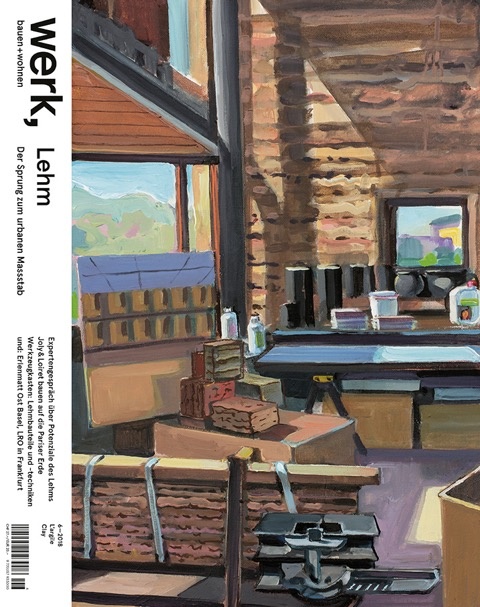werk, bauen + wohnen 6-2018

Editorial: From an Archaic to an Urban Scale
Ten years ago, in an issue with the title «Archaisms» (wbw 3 – 2008) we published a house by Martin Rauch in Schlins that Roger Boltshauser had designed. Since that time all involved have pursued careers – including the building material clay, which is now preparing to conquer the large scale. We have regularly published clay build ings: the Flury House in Deitingen by Spaceshop (wbw 11 – 2010), the school pavilion in Zürich by Roger Boltshauser (wbw 1/2 – 2013), the agriculture school in Mezzana by Conte Pianetti Zanetta (wbw 7/8 – 2014), or most recently, the ornithological station in Sempach by MLZD (wbw 11 – 2016).
People are working on this material more than ever before, on the range of construction possibilities and on forms of expression, in areas in which clay plays a role as a load-bearing building material as well as in the broad field of semi-finished products. With this issue we want to illustrate this development while at the same accompanying the material along the next steps in its development. Thanks to its thermal storage mass, its ability to regulate humidity, the fact that it is obtained and processed without producing almost any CO₂ and can be recycled after dismantling clay is in a position to make a central contribution to the architecture of climate change. However, if building with clay is to acquire great er relevance it must succeed in making the leap to industrial prefabrication and the larger scale and must also be used in settings that are more urban than developments of single family houses for the ecologically ambitious.
The question is: can an entire urban district be built in clay? In Paris we found answers to this question and we have also asked local experts for their assessment. The unanimous opinion is that knowledge about the field of building with clay is still insufficiently widespread. To ensure that, like in the desert city of Shibam in Yemen, clay buildings can soar towards the heavens here, too, both courageous clients and inventive architects are needed. In Shibam high-rise buildings up to 30 metres tall and made from clay bricks have stood close beside each other for more than 500 years. The city is seriously threatened by the continuing war, which has already caused more than 10 000 deaths. Shibam is now on the UNESCO red list of endangered world heritage sites. Roland Züger